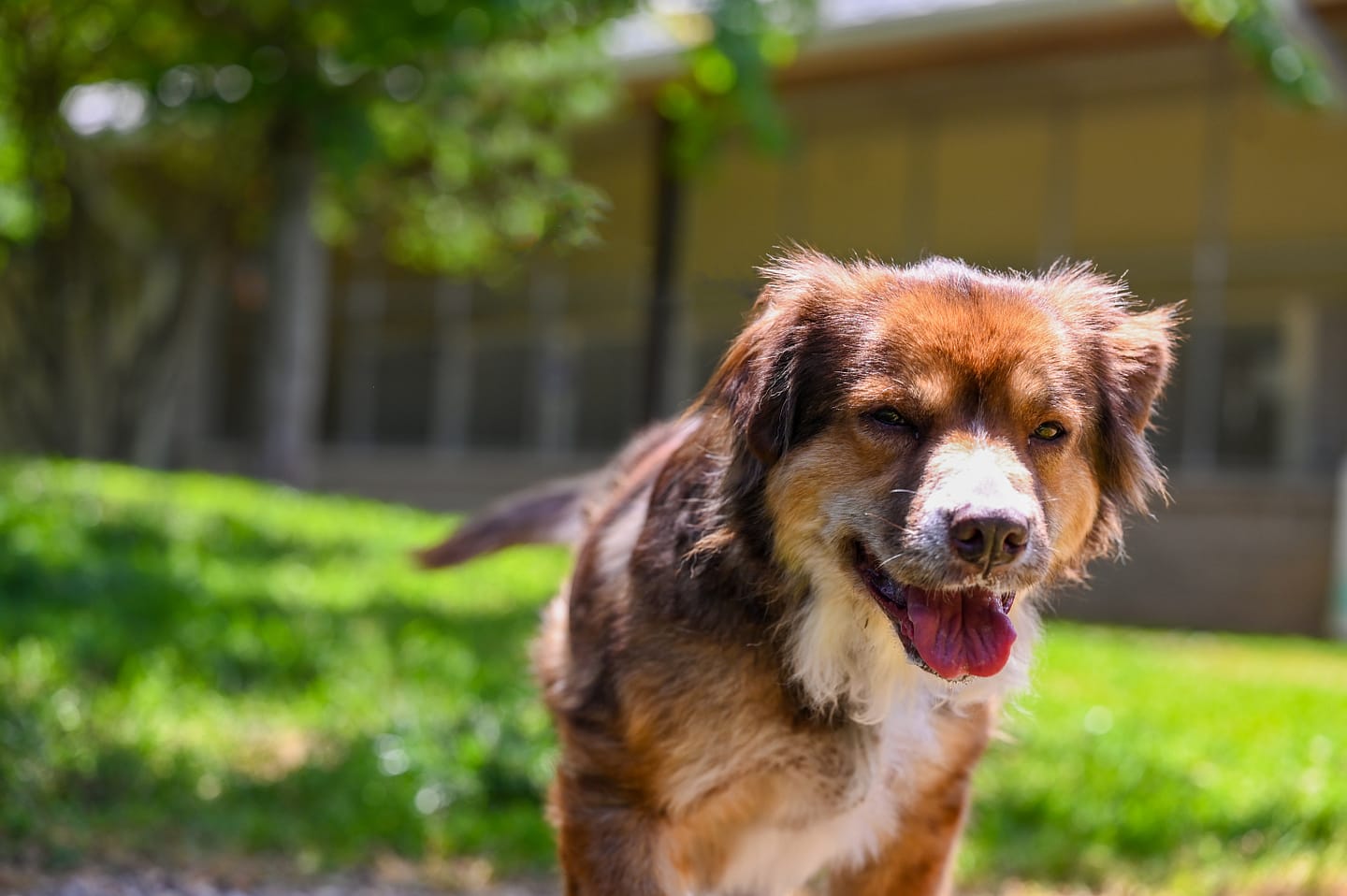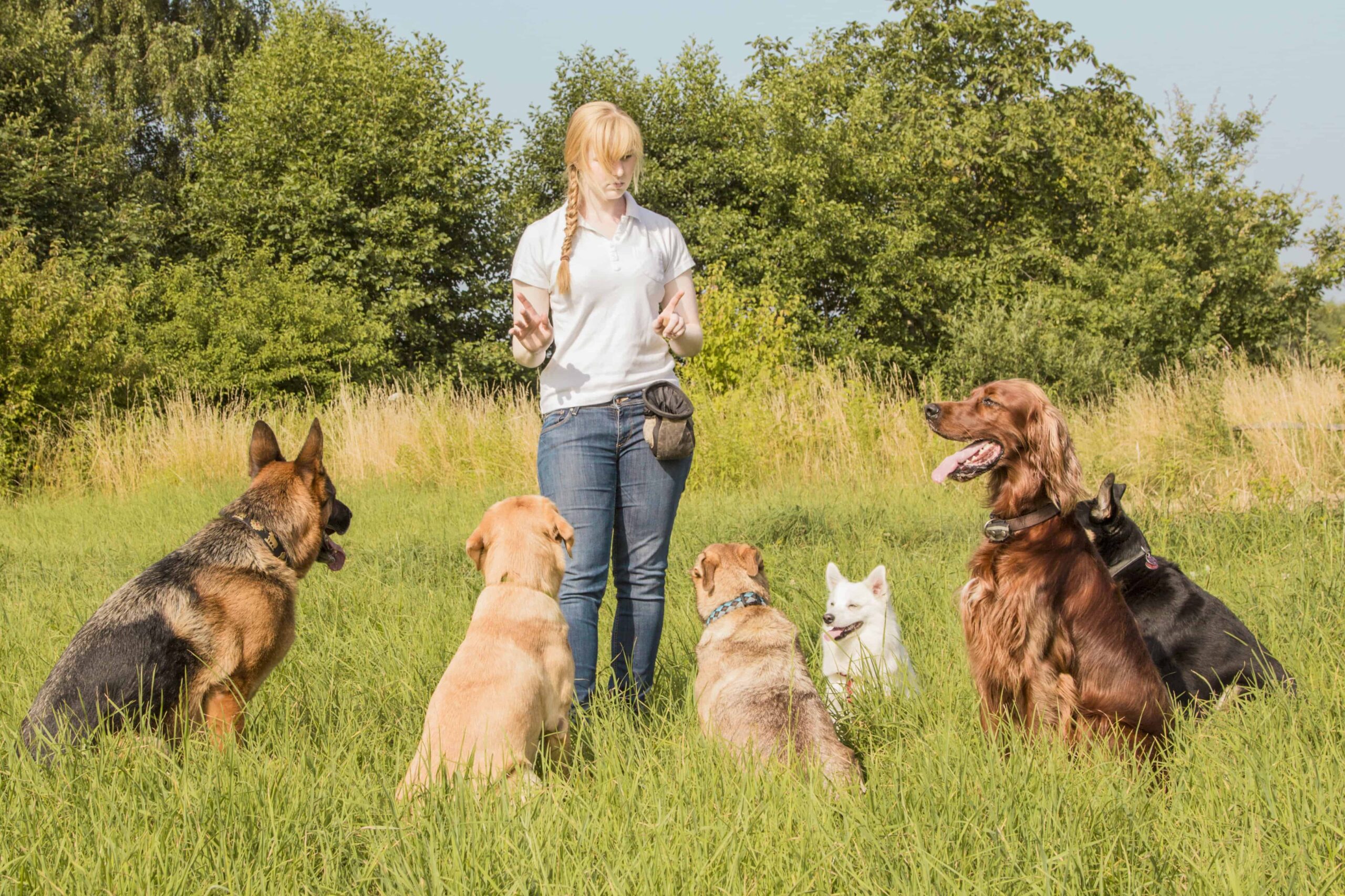How to Pick the Right Method for Successful Dog Training
How to Pick the Right Method for Successful Dog Training
Blog Article
Essential Tips for Successful Dog Training: An Overview for Pet Dog Owners
Effective canine training is a diverse procedure that needs a critical approach tailored to both the pet's character and the proprietor's objectives. Understanding just how to navigate these challenges can substantially boost the training experience, eventually transforming the connection in between owner and pet.
Comprehending Dog Habits
Recognizing dog actions is vital for effective training and fostering an unified partnership between pooches and their owners. Pet dogs connect mostly via body language, vocalizations, and activities, making it important for owners to translate these signals properly. Identifying a dog's position, tail setting, and ear alignment can provide understandings into its emotional state. A wagging tail does not always suggest joy; it can likewise signify enjoyment or anxiousness.

Socializing plays a considerable duty in pet dog behavior; direct exposure to different atmospheres, people, and various other pets can significantly impact a pet dog's personality. Additionally, factors such as breed characteristics and individual character must lead training approaches, as some types may have particular behavior characteristics that necessitate customized techniques. By recognizing these aspects, owners can develop an encouraging setting that motivates positive behavior, bring about successful training results and a much deeper bond with their pet dogs.
Developing Consistent Commands
Reliable interaction with your pet dog begins with developing consistent commands. This foundational component of training is crucial for fostering understanding in between you and your family pet. Uniformity in the commands you use ensures that your dog can reliably associate specific words or expressions with the desired actions.
When selecting commands, pick clear, distinct words that are simple to separate and say from one another. Avoid making use of similar-sounding commands that might perplex your pet dog. As an example, utilizing "rest" and "stay" is ideal, yet "rest" and "hit" can result in misunderstandings.
Additionally, preserve the exact same tone and quantity for each and every command. Pet dogs are delicate to vocal signs, so varying your tone can develop complication.
It is equally crucial to ensure that all household participants are on the exact same web page concerning the commands made use of. A united front in command usage will prevent mixed signals and enhance the understanding procedure.
Favorable Support Techniques
The power of positive reinforcement in canine training hinges on its capacity to motivate desired actions via benefits and praise. This strategy is grounded in the concept that actions followed by desirable outcomes are much more likely to be duplicated. By integrating positive support into your training routine, you can efficiently shape your pet's habits in a useful fashion.
To apply favorable support, it's important to identify what motivates your dog, whether it be treats, toys, or verbal appreciation. When your pet dog carries out a desired action, such as resting on command, promptly award them with a treat or love. This association in between the command and the favorable end result strengthens their understanding.
It's critical to timing the rewards correctly; providing the reinforcement within secs of discover this info here the desired actions helps your canine make the link (dog training). Additionally, consistency is key-- make certain that all relative utilize the very same commands and reward systems to avoid confusion

Progressively, you can decrease the regularity of deals with as your pet discovers the actions, transitioning to commend or recurring incentives. This technique not only fosters a solid bond in between you and your canine yet also advertises a favorable understanding setting, making training a delightful experience for both.
Socialization and Communication
Consistently revealing your pet dog to a selection of atmospheres, people, and various other pets is crucial for their social development. Socializing must begin early, preferably throughout the critical home window of 3 to 14 weeks, when pups are most receptive to new experiences. Nonetheless, older pets can also take advantage of recurring socialization efforts.
Present your dog to various settings, such as parks, pet-friendly shops, and metropolitan locations. This direct exposure aids them adapt to numerous stimulations, decreasing anxiety and anxiety feedbacks. Encourage favorable communications with various other pets and people, weblink guaranteeing that these encounters are controlled and secure to foster self-confidence.
Use organized playdates with genteel canines, as this can enhance your dog's social skills and show them suitable behavior. Obedience classes and training sessions likewise provide outstanding opportunities for socialization, allowing your pet to connect with others in a monitored environment.
Screen your pet dog's body language throughout communications, as this will aid you determine their comfort level. Progressively raise exposure to even more challenging circumstances while making certain that each experience is positive. A well-socialized pet dog is more most likely to exhibit balanced habits, making them a delight to have in any type of setting.
Attending To Typical Training Challenges
Every pet owner will encounter training obstacles at some point, no matter of their canine's age or socializing level. Determining usual problems such as stubbornness, diversions, and fearfulness can assist in creating effective strategies for enhancement.

Diversions during training sessions can derail emphasis. To fight this, begin training in a quiet atmosphere with very little stimuli. Slowly present interruptions as the pet dog becomes extra competent in commands. Short, frequent training sessions are likewise efficient in maintaining focus.
Fearfulness can hinder a pet's understanding procedure. Gradual desensitization to the source of concern, matched with favorable reinforcement, can aid minimize anxiety. Perseverance is crucial; never force a canine right into a scenario that triggers distress, as this might worsen the issue.
Inevitably, understanding and resolving these typical challenges with a structured strategy will certainly foster a much more productive training experience, enhancing the bond between dog and owner while promoting effective knowing.
Final Thought
In summary, successful dog training counts on a comprehensive understanding of canine behavior, the facility of regular commands, and the application of positive reinforcement methods. Socialization plays a vital duty in establishing well-adjusted family pets, while addressing typical training difficulties calls for persistence and flexibility. By applying these necessary methods, pet dog owners can foster a strong bond with their dogs and promote preferable habits, ultimately bring about a harmonious relationship in between humans and their canine companions.
Understanding pet actions is crucial for efficient training and cultivating an unified relationship between dogs and their proprietors.Socialization plays a significant duty in pet dog actions; direct exposure to numerous atmospheres, people, and various other pets can substantially impact a canine's personality.The power of positive reinforcement in pet training lies in its capability to motivate wanted behaviors via incentives and praise. By incorporating positive reinforcement right into your training program, you can properly shape your pet dog's actions in a positive way.
In recap, effective pet training relies on a thorough understanding of canine habits, the facility of regular commands, and the application of positive support strategies.
Report this page